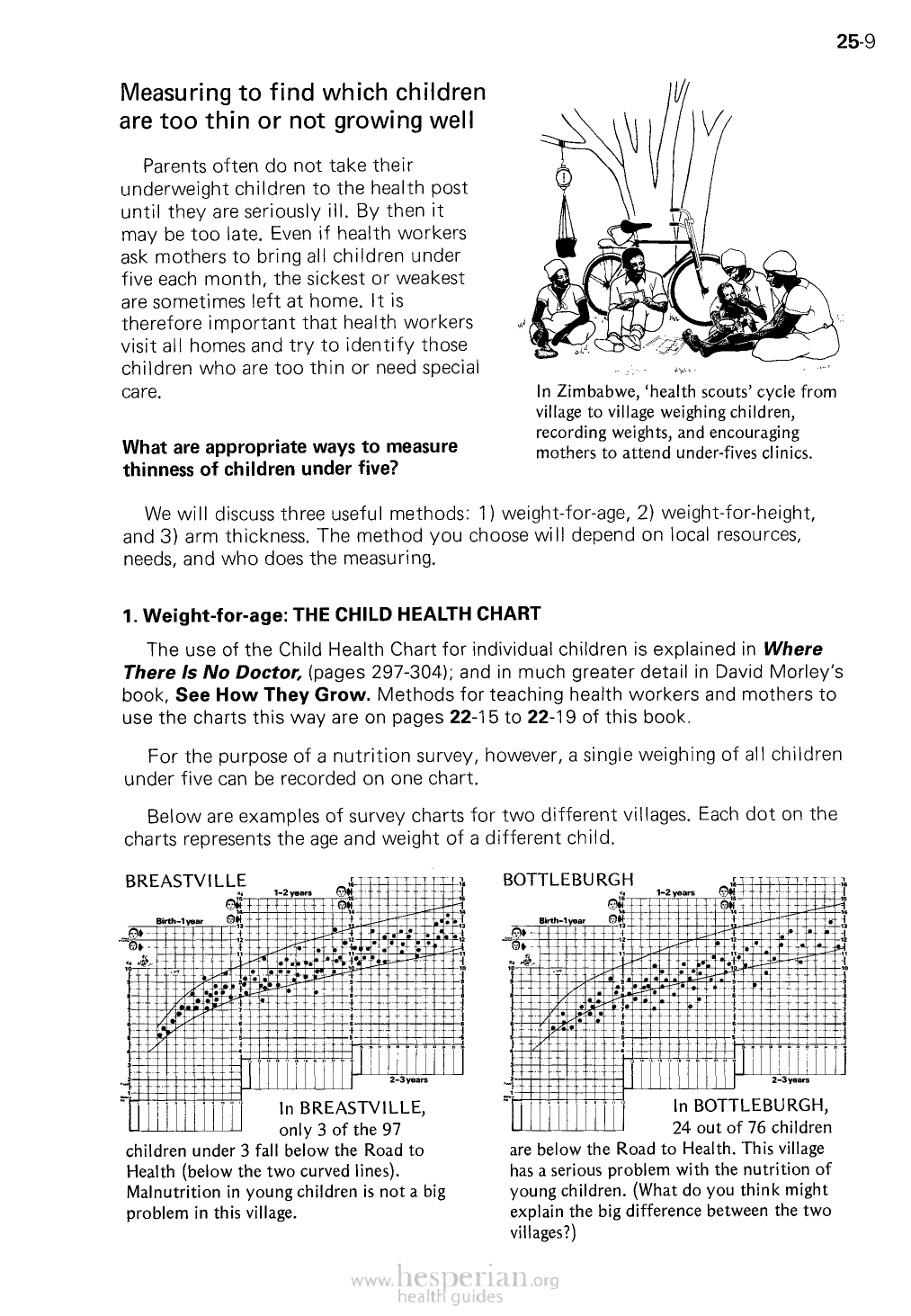
25-9
Measuring to find which children
are too thin or not growing well
Parents often do not take their
underweight children to the health post until
they are seriously ill. By then it may be too
late. Even if health workers ask mothers to
bring all children under five each month, the
sickest or weakest are sometimes left at
home. It is therefore important that health
workers visit all homes and try to identify
those children who are too thin or need
special care.
What are appropriate ways to measure
thinness of children under five?
In Zimbabwe, ‘health scouts’ cycle from
village to village weighing children,
recording weights, and encouraging
mothers to attend under-fives clinics.
We will discuss three useful methods: 1) weight-for-age, 2) weight-for-height, and
3) arm thickness. The method you choose will depend on local resources, needs, and
who does the measuring.
1. Weight-forage: THE CHILD HEALTH CHART
The use of the Child Health Chart for individual children is explained in Where There
Is No Doctor, (pages 297-304); and in much greater detail in David Morley’s book, See
How They Grow. Methods for teaching health workers and mothers to use the charts
this way are on pages 22-15 to 22-19 of this book.
For the purpose of a nutrition survey, however, a single weighing of all children under
five can be recorded on one chart.
Below are examples of survey charts for two different villages. Each dot on the
charts represents the age and weight of a different child.
BREASTVILLE
BOTTLEBURGH
In BREASTVILLE, only
3 of the 97 children
under 3 fall below the Road to Health
(below the two urved lines). Malnutrition in
young children is not a big problem in this
village.
In BOTTLEBURGH,
24 out of 76 children
are below the Road to Health. This village
has a serious problem with the nutrition of
young children. (What do you think might
explain the big difference between the two
villages?)